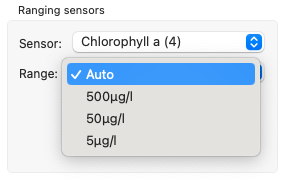Auto-ranging
Turbidity and fluorescence (chlorophyll/chlorophyll a, cDOM/fDOM, backscatter) ranging sensors can operate in auto-ranging mode.
RBR instruments support turbidity and fluorescence sensors from several third-party manufacturers.
Furthermore, The RBRconcerto3 and RBRmaestro3 can integrate the RBRtridente three-channel sensor, capable of making multiple fluorescence and backscatter or turbidity measurements simultaneously.
See the pertinent instrument guides for supported sensors and their specifications.
To enable the auto-ranging setting, go to Configuration > Ranging sensors > Range and select "Auto" from the dropdown menu. See the "Ranging sensors" section in Ruskin User Guide: Standard Instruments³ for details. In this mode, the instrument changes the gain setting on the front-end amplifiers to the range most appropriate for its environment. As a result, the final reading is in the most suitable range giving the highest accuracy possible.
This is a great option when one does not know the expected range for the deployment, or if working in areas where the environment could vary greatly for that parameter. It is important to know that RBR instruments can operate at rates <1Hz, and many of these optical sensors will take several samples to stabilize their measurements after they switch to a new range.
Example
One of the supported ranging sensors is the Turner fluorometer. It is an analogue sensor with the auto-gain feature. This sensor has three internal amplifiers to produce a signal for each of the three ranges that the sensor is calibrated for, and they will show in the dropdown menu.

These three ranges are 0-5µg/L, 0-50µg/L, and 0-500µg/L, with each range having an error of 2% of the full scale. Thus, the 0-500 range has an error of 10µg/L, the 0-50 has an error of 1µg/L, and 0-5 an error of 0.1µg/L.
When set to "Auto", Ruskin uses an iterative function to select the reading in the best range and store it. The reading selected must be within the lowest 65% of the full range, which is up to 3.25µg/L for the 0-5µg/L range. If it is greater than 3.25µg/L, the instrument switches to the next range (0-50µg/L) before storing the reading.
These changes in gain are marked by a "Diagnostic" event in the dataset so that the range for a region of data is known.
